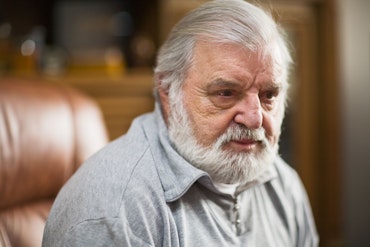National Seniors Advocate calls for health insurance changes
With health insurance premiums set to rise on average by nearly 5 percent in April, the consumer lobby for older Australians is questioning some of the costs and urging the Federal Government to look at the inefficiencies in the system.

Affordability of private health insurance is one the biggest concerns according to National Seniors members (Source: Shutterstock)
Over the past six years, premiums have increased by almost 40 per cent and the latest rise is around three times the rate of inflation.
National Seniors Advocate Mr Ian Henschke says affordability of private health insurance was one the biggest concerns according to National Seniors members. The latest rate rise has been blamed on the increasing cost of specialist service, pricing of prostheses and rising use of high-cost services.
“We know, for instance, that prices for prosthetics, which include everything from a new knee or hip to a heart valve are, on average, double that of comparable international benchmarks,” says Mr Henschke. “Device manufacturers and private hospitals are the beneficiaries of these high prices at the expense of consumers.”
The cost of medical devices such as pace makers are more expensive under a private hospital compared to the public system, and are currently a subject of a Senate inquiry.
However, Mr Henschke believes reducing these prices to what’s paid overseas could cut the price of the health insurance premiums by about $150 a year.
“This is a sizeable saving given the health insurance premium increase that comes into effect on 1 April is expected to cost a couple up to an extra $208 a year,” he says.
In addition, Mr Henschke believes there needs to be more transparency over charges. “I spoke about this issue on the radio recently and a doctor called in saying a colleague had charged him for a long consultation when in fact it was a short one.”
With over 30 insurers to choose from, National Seniors members were also concerned about product complexities, with customers unsure of whether they were getting a good deal or what exactly was covered.
Mr Henschke highlights a case where a person had to wait a year for knee replacement surgery because they hadn’t noticed a change in their policy wording.
“People are not happy with it,” he says. ”They discover this isn’t covered by their fund and this isn’t covered by their fund, so they are dropping out of the system.”
This, he points out will put more strain on Medicare. “Yes we are better off than the Americans who pay hundreds and thousands of dollars for health, but have we got the best system in place?” he asks.“We need to look at why it’s going up and what we need to do to fix it.”











![The new Aged Care Act exposure draft is slated for release in December of 2023, but advocates hope to see it rolled out on January 1, 2024. [Source: Shutterstock]](https://agedcareguide-assets.imgix.net/news/articles/wp/agedcareact__0811.jpg?fm=pjpg&w=520&format=auto&q=65)












Comments